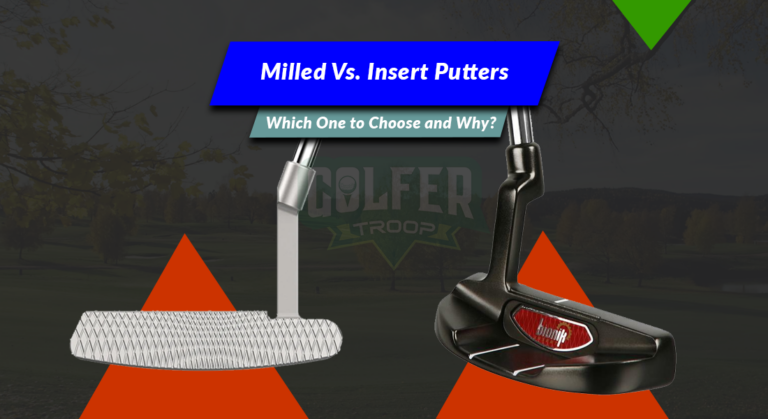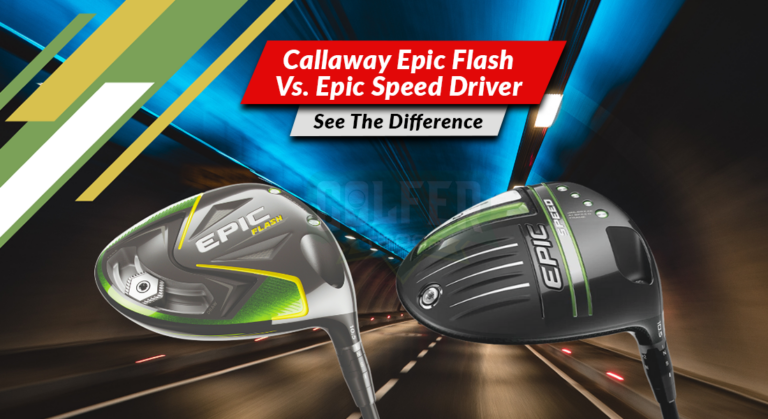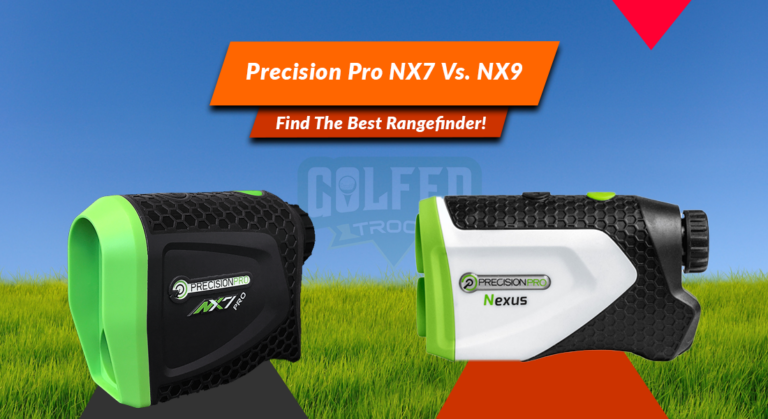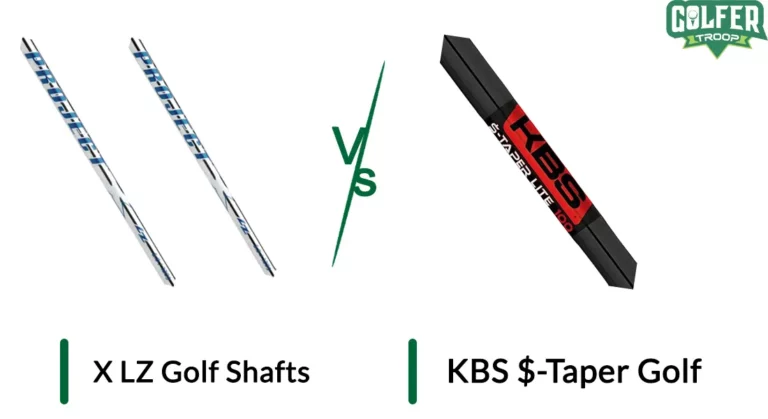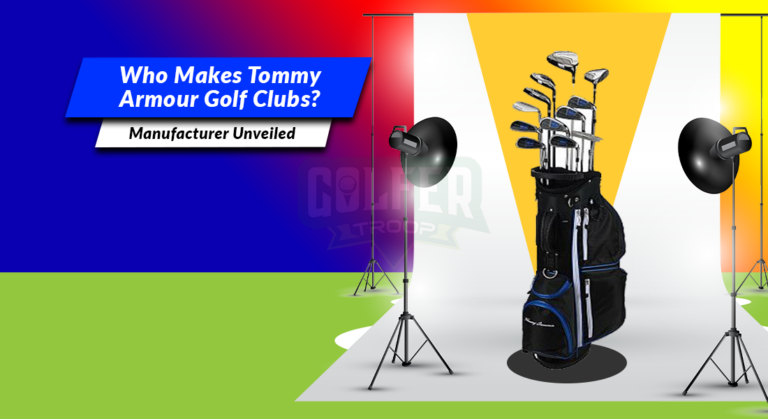PXG Gen 2 vs. Gen 3: Which Golf Iron Should I Choose?
Are you having a hard time choosing between the Pxg Gen 2 and Gen 3 irons? If so, you’ve arrived upon the right article. Whether you’re a beginner or an expert, this guide will help you choose the best Pxg irons for your game.
Compared to gen 3 irons, gen 2 irons feature a wider, more forgiving head. Generation 2 irons are thicker for ball speed, and Generation 3 irons are thinner for distance management. Furthermore, Gen 2 irons’ grooves are deeper than Gen 3’s.
The best golf clubs available today are made by PXG. Gen 2 and Gen 3 irons are well-designed and priced. So, Let’s compare Gen 2 and Gen 3 PXG irons.
Overview Of pxg gen 2 irons
The PXG Gen 2 series was created to be the next generation of golf clubs, giving greater accuracy and control while providing maximum forgiveness.
Players who appreciate vintage irons may prefer the Gen 2 over its more modern sibling.
Additionally, the top line and sole of the Gen 2 clubs are thicker, making them easier to hit from any lie on the golf course.
PXG Gen 2 irons are an excellent option for any golfer searching for a dependable set of clubs because they offer a conventional appearance, performance, and forgiveness.
What We Like
- Provide better range and precision
- Feature a softer feel and improved feedback
- Ensure long-term performance and durability
- More forgiveness on off-center shots
What We Dislike
- Produce shorter flight distances
Overview Of pxg gen 3 irons
Pxg Gen 3 irons are the most recent addition to the PXG golf club lineup and represent a significant improvement over the previous generation.
These irons have a revolutionary Changeable Thickness Face, progressive center of gravity, increased turf interaction, and variable face thickness.
These qualities enable more distance, accuracy, and control when using the irons. The irons are sleeker and more aerodynamic than their predecessors, allowing for easier launch and faster ball speed.
pxg gen 2 vs gen 3 irons: Comparison Table
Choosing PXG Gen 2 or Gen 3 irons can be difficult. PXG Gen 2 and Gen 3 irons offer different features and performances. This table lets you compare the two iron sets.
| Features | Pxg gen 2 | Pxg gen 3 |
| Face construction | Thicker face construction | Thinner face construction |
| Groove design | U-shaped | V-shaped |
| Center of gravity location | Higher | Lower |
| Weight | 370-375 grams | 355-360 grams |
| Loft options | Strong | Weak |
| Sound | Louder and more metallic sound | Softer and more muted sound |
| Material | 431 stainless steel | 17-4 stainless steel |
| Shafts | Steel shafts | Graphite shafts |
| Offset | More offset | Less offset |
| Sole width | Wider sole | Narrower sole |
| Finish | Chrome finish | Black finish |
| Price | $889 | $949 |
What Are The Differences Between pxg gen 2 and gen 3 irons?
PXG (Parsons Xtreme Golf) has transformed golf with their unique and performance-driven equipment. If you’re considering buying PXG irons, you should know the differences between the Gen 2 and Gen 3 models.
Feel
Due to their thick top line and low face height, the Gen 2 irons have a softer feel, allowing for better contact with the ball.
The Gen 3 irons have a narrower top line and a higher face height, giving them a slightly more rigid feel at impact. The soft face inserts in both sets of clubs also add a softer feel.
Forgiveness
Gen 2 irons are more precise than Gen 3’s but less forgiving on mishits due to their narrower faces and players’ shapes.
Gen 3 irons have a wider head and a broader face, allowing you more forgiveness on mishits but less precision. For inconsistent golfers, Gen 3 irons can help them hit more solid shots.
Launch
The Gen 2 irons have a higher launch than the Gen 3 irons, so that they can go farther with a slightly lower spin rate.
On the other hand, the Gen 3 irons have been made to have a lower launch and more spin, which can help improve accuracy and control on approach shots.
Spin
The PXG Gen 2 irons’ narrower face shape generates more excellent spin, especially on rough or tight-lay shots.
The Gen 3 irons’ thicker face decreases spin and makes them better for long iron shots with a higher launch angle.
Compared to Gen 2 irons, Gen 3 irons feature deeper face grooves. This increases friction and spin between the clubface and the ball, giving the shot greater backspin.
Distance
To begin, the Gen 3 irons boast an ultra-low CG design that aids in increasing the launch angle and providing a higher peak height. This extends carry distances and improves accuracy.
However, the PXG Gen 2 irons have a mid-high launch trajectory with a lower peak height, resulting in shorter carry distances.
Gen 3 irons have thinner and lighter faces than Gen 2 irons, allowing for faster ball speeds and longer carry lengths.
Lie and Loft
PXG Gen 3 irons have a slightly more upright lie angle than other brands, whereas PXG Gen 2 irons have a marginally higher vertical lie angle. The loft is the slope at which the face meets the ground.
PXG Gen 3 irons have somewhat higher lofts than PXG Gen 2 irons. This provides for better distance control and shot shaping.
PXG Gen 2 iron
| Club | Lie | Loft |
| 3 | 60.5° | 20° |
| 4 | 61° | 22.5° |
| 5 | 61.5° | 25° |
| 6 | 62° | 28° |
| 7 | 62.5° | 32° |
| 8 | 63° | 36° |
| 9 | 63.5° | 41° |
| W | 64° | 46° |
PXG Gen 3 iron
| Club | Lie | Loft |
| 3 | 60° | 17° |
| 4 | 60.5° | 19° |
| 5 | 61° | 212° |
| 6 | 61.5° | 24° |
| 7 | 62° | 28° |
| 8 | 62.5° | 32° |
| 9 | 63° | 37° |
| W | 63.5° | 42° |
| G | 63.5° | 48° |
As a result of the Gen 2 iron’s 1-degree flatter lie angle, the ball rests a little lower than it would with the Gen 3 iron.
Gen 2 ranges from 20 to 46 degrees, whereas the loft of Gen 3 ranges from 17 to 48 degrees. This allows golfers to modify the angle of their shots.
pxg gen 2 or gen 3: Which Golf irons To choose?
A few things should be considered when choosing between PXG Gen 2 and Gen 3 golf irons. Compared to the Gen 3 clubs, the PXG Gen 2 irons have more forgiving club faces and better launch conditions.
The Gen 2 irons are also softer than the Gen 3. On the other hand, the PXG Gen 3 irons have cutting-edge technology that gives them more control over trajectory, spin, and distance.
These clubs’ longer blades increase forgiveness. In the end, it all comes down to personal preference.
The PXG Gen 2 irons are more forgiving and help you get the ball in the air. Nevertheless, the PXG Gen 3 irons may be better if you prefer more control and accuracy.
FAQs.
We’ve compiled a list of FAQs to answer your PXG Gen 2 vs Gen 3 questions and help you make an informed decision. Continue reading to learn more!
Does the PXG Gen 3 iron have a bigger sweet spot than the PXG Gen 2 iron?
Yes. Because of their lightweight hollow construction and thinner faces, the new PXG Gen 3 irons have a wider sweet spot. This increases forgiveness and distance on off-center hits.
Is the PXG Gen 3 iron easier to hit than the PXG Gen 2 iron?
Yes. The PXG Gen 3 iron has a better feel and a higher moment of inertia (MOI), which makes it easier to hit with more accuracy and distance.
What type of player would benefit most from using PXG Gen 3 irons?
The PXG Gen 3 Irons are designed for golfers of all skill levels who want to improve their distance and accuracy while maintaining control and consistency.
The clubs have a wide sole that makes them more forgiving on off-center shots, and the ultra-thin face technology increases distance on each shot.
What kind of technology is used in the PXG Gen 2 vs Gen 3 irons?
Both generations of PXG irons use perimeter weighting and exclusive advanced designs to improve forgiveness, launch angle, and spin rate.
The Gen 3 Irons have an ultra-thin face and toe tungsten weighting to increase ball speed.
Are the Gen 3 irons more expensive than the Gen 2 irons?
In general, the Gen 3 irons cost more than the Gen 2 irons because of their superior technology and construction.
But they also offer better performance and range, making them an investment worth making.
- Read Also: PXG 0211 vs. TaylorMade P790: Which Iron Reigns Supreme?
- Read Also: PXG 0311P vs. TaylorMade P790 Irons | A Detailed Comparison
- Read Also: PXG 0211 vs 0311 Irons: A Precise Way to See the Difference
- Read Also: PXG 0211 vs. PING G410: Which Iron is Right For You?
- Read Also: PXG Gen 3 vs. Gen 4 | Which Golf Iron Should You Choose?
Meet Jalal, a passionate golf writer and the driving force behind Golfertroop.com, your go-to destination for all things golfing! Whether you’re a seasoned golfing veteran or a beginner taking your first swing, Jalal is here to assist you in making the most out of your golfing experience.

